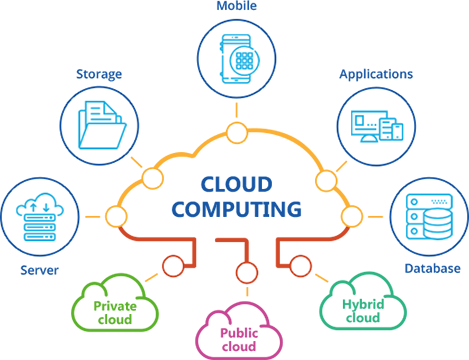Universal Cloud Service: Versatile and Scalable Solutions for each Sector
Universal Cloud Service: Versatile and Scalable Solutions for each Sector
Blog Article
Achieve Seamless Scalability With Cloud Provider
In the ever-evolving landscape of cloud services, achieving smooth scalability stands as a foundation for modern companies looking for to stay adaptable and affordable. The quest for smooth scalability with cloud services reveals a globe of opportunities for those prepared to welcome the transformative power of vibrant source monitoring.
Benefits of Cloud Scalability
Cloud scalability supplies organizations the versatility to dynamically change resources based on demand, making certain optimum efficiency and price performance. In addition, cloud scalability promotes innovation and testing by permitting services to easily check brand-new ideas and scale them as required. Inevitably, the advantages of cloud scalability prolong past expense savings to encompass improved efficiency, agility, and innovation.
Secret Features for Scaling
Efficient scaling in cloud solutions relies upon crucial functions that allow organizations to adjust sources dynamically based on need. One crucial function for scaling is flexibility, allowing resources to scale up or down in feedback to varying work. This guarantees that organizations can fulfill performance demands without over-provisioning resources. Another crucial attribute is scalability, making it possible for systems to manage enhanced work by including sources seamlessly. This function is crucial for fitting growth without jeopardizing efficiency. Additionally, automation plays an important function in scaling by automating the provisioning and de-provisioning of resources based upon predefined plans. Automation reduces human intervention, enhances effectiveness, and makes certain rapid feedback to transforming needs. Monitoring and analytics tools are likewise vital for scaling, giving insights into source application, performance metrics, and potential bottlenecks. These tools allow organizations to maximize and make educated choices source allocation for effective scaling. On the whole, these vital functions jointly encourage organizations to achieve smooth scalability in cloud services.
Executing Auto-Scaling Approaches
To efficiently optimize resource appropriation and adjust to varying workloads, organizations have to purposefully execute auto-scaling approaches in their cloud solutions facilities. Auto-scaling permits systems to immediately adjust the number of compute resources based upon real-time need. There are various auto-scaling techniques that organizations can utilize, such as predictive scaling, which utilizes historical data to forecast future resource demands, and reactive scaling, which responds to current work modifications.

Best Practices for Scalability
For companies aiming to enhance their scalability in cloud solutions, implementing best practices is crucial for optimum performance and source administration. One key finest practice is designing applications with a microservices design. This approach breaks down applications into smaller sized, independent solutions that can be deployed, updated, and scaled independently, allowing for higher versatility and scalability.
Another crucial practice is utilizing containerization innovation, such as Docker or Kubernetes. Containers allow the packaging of applications and their dependencies into isolated systems, making it much easier to scale elements independently and release them consistently throughout different environments.
In addition, implementing automated implementation and framework as code (IaC) can streamline scalability initiatives (linkdaddy cloud services). Automation tools like Terraform or Ansible help in provisioning and managing resources efficiently, reducing manual errors and making it possible for fast scalability
Furthermore, keeping an eye on performance metrics, establishing signals, and carrying out routine capability preparation are important practices to ensure positive scalability management. By sticking to these finest methods, organizations can accomplish smooth scalability in their cloud solutions while optimizing performance and resource use.
Tracking Performance Metrics
When evaluating the effectiveness of cloud services scalability, closely keeping an eye on performance metrics is crucial for making sure optimal capability and source allowance. By constantly click for more info tracking essential efficiency indicators (KPIs) such as response times, throughput, source, and latency utilization, companies can obtain beneficial understandings right into the health and efficiency of their cloud facilities. Keeping track of efficiency metrics allows for the early discovery of prospective traffic jams or problems that might impact scalability, allowing aggressive procedures to be taken to resolve them prior to they escalate.

Verdict
To conclude, attaining smooth scalability with cloud solutions is vital for companies to maximize performance, improve technology, and preserve high performance levels during peak times. By leveraging the advantages of cloud scalability, applying auto-scaling methods, using crucial features such as elasticity and automation, and following finest methods like application layout and performance monitoring, organizations can successfully scale their systems while making the most of source usage and efficiency.
The quest for seamless scalability with cloud services introduces a world of opportunities for those willing to embrace the transformative power of vibrant resource management.
Cloud scalability offers organizations the adaptability to dynamically adjust resources based on need, making sure ideal performance and price performance. One more essential attribute is scalability, enabling systems to handle raised work by adding resources seamlessly.For organizations aiming to boost their scalability in cloud services, implementing best methods is critical for ideal efficiency and resource management.When evaluating the performance of cloud solutions scalability, very closely keeping an eye click reference on efficiency metrics is vital for ensuring ideal functionality and source allotment.
Report this page